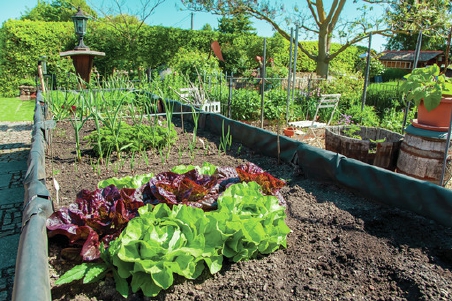By Karen Cohen
Just when I thought I might be shifting to low gear and taking it slow in the garden department, a blast of fresh air swept me off my feet! I attended the Virginia Biological Farming Conference for a weekend in Roanoke. Not only did I come home with new seed varieties from new seed companies, I also attended more than eight lectures from experienced growers. To say I am pumped is not accurate. I am fortified!
Did you know that individuals can start their own seed company? I met several growers who had started their own organic, non-GM (genetically modified) seed companies. Farmers also form seed co-ops where they can share “culturally meaningful seeds” in nonprofit cooperatives who strive to grow diverse crops, grains, herbs and flowers. For home growers, seed swapping is a great way to introduce new varieties into your plots and also use a different gene pool rather than your own year after year. When I buy a pack of tomato seeds, for example, it contains about 25 or more seeds which is more than I want to grow for just two people. Swapping with my backyard garden peeps allows us to trade seeds while they are fresh and still viable rather than saving a bunch year after year. Find a gardener or two to swap seeds with! Last year I traded oregano rooted starts for rhubarb roots for example.
Another group of commercial growers are producing micro greens for sale at farmers markets and to restaurants. Home growers can easily grow a variety of salad greens from seeds even in the winter inside a hoop house or a greenhouse. Micro greens such as baby spinach, lettuces, and kales are harvested either leaf by leaf or with scissors. Giving a tray of 4 inch greens a haircut allows them to grow more leaves and you have a salad of fresh micro greens. We plant a 3 ft. x 3 ft. block of mixed greens every 2 weeks under a hoop when the soils warm up in March and harvest week after week. Once the weather gets too hot in the summer, the plastic cover comes off and we plant our shade loving greens in the cooler garden spots behind the rows of tomato plants, climbing beans, and dwarf corn.
When you meet farmers and growers, you quickly learn that their jobs require long, often back breaking hours, and are never done for profit alone. Growing food or raising livestock does not provide instant gratification. Plants and animals take time to grow and you must monitor the health of your crops and your animals. People who do this work for a living or those of us who have backyard gardens love working outdoors and rely on nature and the seasons as guides. Our reward is fresh, untainted food that goes from garden to table in a matter of hours.
When you peruse the seed catalogs, you have a wide variety of choices. Eggplant can be grown in different colors: black, purple and white, and varying sizes: round, oblong and elongated shapes. You don’t see that kind of variety in the grocery store, do you? Cherokee Purple or Mortgage Lifter tomatoes grow without any trouble in our yards, but you can’t purchase them in a commercial setting unless you hook up with a farmer who grows them. I grow food for variety and freshness. Importing tomatoes from Florida, California, or Mexico is not my idea of eating fresh!
West Virginia Extension offers a wealth of info for gardening in our state along with a gardening calendar for 2023 called Colors of the Garden. You can download and print out from your computer. Go online to https://download.ext.wvu.edu/garden-calendar. You can learn about how to avoid creating herbicide resistant weeds, garden pests, and FNP – the Family Nutrition Program; there’s even healthy recipes to check into. There is no end to learning and growing!
(Karen Cohen is an organic grower, photojournalist, and avid explorer. If you have seeds to swap, please email natureswaykaren@gmail.com, and Happy Gardening!)


